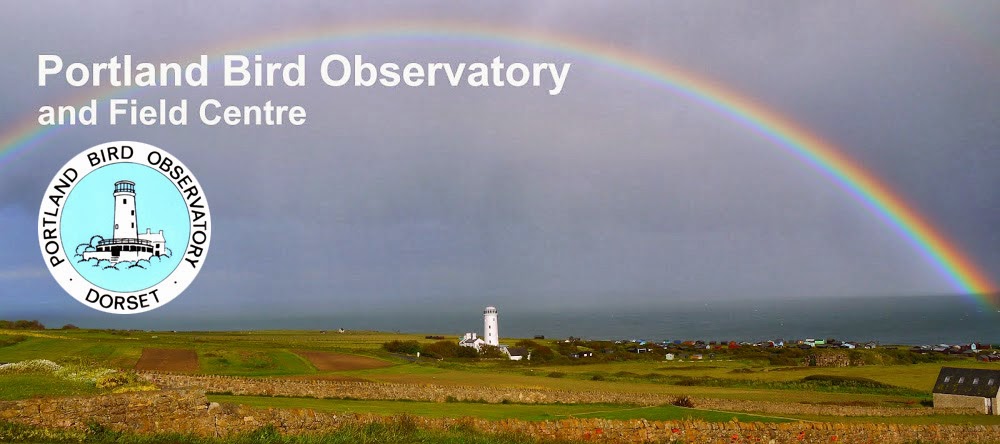After a night when sampling with a sound recorder revealed there was strong passage of passerines overhead (there probably always is at this time of year, but to actually hear the faint calls of things like Tree Pipits high overhead in the early hours was quite a revelation - thanks to Nick Hopper for instigating this project) it was a considerable disappointment to find that the wind was fairly whipping along the Channel again at dawn. Despite the unhelpful conditions it didn't take long to discover that really very little had grounded, with even the commonest migrants only thinly spread at the Bill; Wheatear and Blackcap managed totals there of 40 and 20 respectively, but with few other even double figure totals it was left to singles of Short-eared Owl and Grasshopper Warbler to provide the best of the interest. Visible passage of hirundines, pipits and wagtails was a lot stronger, and included a sample total of 618 Meadow Pipits through in 30 minutes during the morning; apart from the numbers, interest overhead also came in the form of a Marsh Harrier over Weston, and 18 Cormorants and a Hobby over the Bill. The day's only other reports were of 2 each of Little Stint, Sanderling and Knot amongst the waders at Ferrybridge.
A Marsh Oblique-barred - a new species for the island list - caught at Reap Lane was by far the highlight from overnight mothing; immigrants/wanderers at the Obs included 2 each of Rusty-dot Pearl and Rush Veneer, and singles of Diamond-back Moth, Horse Chestnut, Pearly Underwing, Delicate, Dark Spectacle and Silver Y; elsewhere, singles of Oak Hook-tip and Delicate were the best on offer at the Grove.
Marsh Oblique-barred - Reap Lane, 16th September © Martin Cade
...a very unexpected addition to the island moth list from John Lucas' garden trap - we'll try again for a better photo but it was a pretty miserable looking specimen and we daren't let it out of the pot as it was extremely skittish and constantly scuttled about like a diminutive mouse! Despite its tiny size, it seems this species has some propensity to wander away from its usual haunts in acid bogs and mosses with, for example, a previous coastal Dorset record at Durlston Head.

